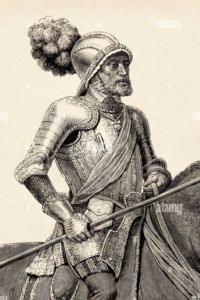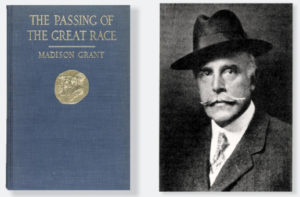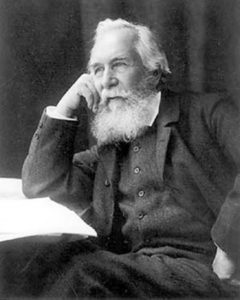by Heinrich
There are some anti-Nordicists, such as those in Counter-Currents, who claim that Hitler was not a Nordicist. These people can easily be proved wrong simply by showing them the facts. But there is a more frequent and different kind of anti-Nordicism even in neo-Nazi circles.
The worldview of Hitler and National Socialism was not based on superstition or occultism, as many uneducated people claim, but had a scientific basis and ice-cold logic. If science proved that there was a mistake in their racial policy, they would surely have corrected it.
Anti-Nordicists will tell you that if the top Nazis were alive today, they would realise that their racial policy was wrong and that it’s time to turn the page, so that’s what we should do. They claim that scientific advances in the field of genetics have shown that there is not even such a thing as the ‘Nordic race’ and that Europeans with this phenotype are the same as other Europeans who do not have it.
They say that we need some continuity with the ideology of National Socialism but not with its racial policy. A good starting point is to point out that, as early as 1950 an United Nation’s educational, scientific and cultural organisation set up a committee of experts (with a very high percentage of Jewish demographics) which issued a Declaration on Race, stating that there was no scientific basis or justification for racial prejudice. They even went so far as to call race a ‘social myth’. It is clear that only five years after World War II they had no knowledge about race, nor was there any scientific breakthrough in this field, so it cannot be said that the scientific community moved away from pre-1945 race science as a result of a scientific breakthrough.
A very similar explanation can be found on Wikipedia: ‘After the war, the discovery of the Holocaust and Nazi abuses of scientific research (such as Josef Mengele’s ethical violations and other war crimes revealed in the Nuremberg trials) led most of the scientific community to repudiate scientific support for racism’. The alleged reason is Mengele and the Holocaust, not science. With this in mind it is very likely that were it not for this politically and morally biased disruption of racial science, today’s geneticists would not be contradicting the pre-1945 racial classification.
These people argue that racial anthropology should be thrown out of the window because we now apparently have more advanced knowledge about race. In reality, we only have more advanced technologies. However, these are not being used in the field of racial research in the way they should be, and this is easily demonstrated by the fact that not only have no new racial categories been established using all this advanced technology, but most researchers do not even talk about race any more.
A 2021 study examining more than 11,000 articles published between 1949 and 2018 in the American Journal of Human Genetics found that the term ‘race’ was only used in 5% of articles published in the last decade. Coupled with an increase in the use of the terms ‘ethnicity’, ‘ancestry’ and location-based terms, it suggests that human geneticists have mostly abandoned the term ‘race’.
So it should be clear to people with a functional brain that we cannot replace the racial foundation of National Socialism with this new science. I am not saying that what contemporary geneticists say has to be ignored in its entirety, but it has to be interpreted in a way that supports our ideas and not in a way that proposes the total annihilation of everything we knew so far. Consider, as a positive example of this, Evropa Soberana’s ‘The New Racial Classification’, published as an appendix to The Fair Race’s Darkest Hour (see our books —Ed.), a summary of which is reproduced below:
Editor’s summary: The European race is divided into three primary races: the European Nordic White (‘White Nordid’ or WN), the Central Asian Nordic Redhead (‘Red Nordid’ or RN) and the Near Eastern Armenid. The white race is a mixture of two or more races. We cannot say ‘this person is pure white’, but ‘this person has a mixture of races A, B and C in such proportions’. By terms such as Aryan or White we mean a mixture of Nordid White and Nordid Red and their slight crossbreeding with non-White ‘Armenids’ or ‘Mongolids’, usually people of Germanic and Slavic origin. Therefore, although the ideal white is a White Nordid with a Red Nordid, we cannot say that whites who have some Armenid or Mongolid genes are non-white. However, we could say that they are non-white if they have a considerable amount of Armenid and/or Mongolid and especially Congid blood. He who knows how to analyse facial features can be almost as good at genetic analysis or even better, as to date genetic analyses do not include detailed racial information.
The reason why physical anthropology should remain the basis for racial classification is very simple: it is the natural approach. Other technologies should only be used to supplement it. But if anthropology is discarded, then the actual physical basis of race is discarded as well, and race is reduced to a mere theory, something that can only be observed in a laboratory rather than a material reality visible to the human eye in the real world.
All of this appeals to sheep-minded people who are willing to ignore physical realities and blindly believe their claims. For example, Christians believe that our bodies are irrelevant because inside we are all made in the image of God. The anti-Nordicists of today’s racial right believe something very similar with the difference that they try to use genetics, not the ‘human soul’.

Does the same DNA inhabit these very different bodies?
Many of them often realise that this is compromising and will try to do damage control by dishonestly claiming that they are not actually in contradiction with visible realities, but only with the conclusions that were drawn about these visible realities in the 20th century.
The problem is that anthropologists have established different racial categories based on the physical characteristics they observed. Geneticists will not tell you that the characteristics themselves do not exist (for example, as if they told you that blue eyes do not exist): that would be total madness. They will only tell you that it is not a definitive marker of a distinct human race, and this makes the contradiction very clear.
Many of them even argue that we should disregard the conclusions of professional geneticists and try to be sceptical and say that we should analyse for ourselves the data they produce and draw our conclusions. This may sound similar to what I have suggested above, but there is a huge difference: I question the methods used in this field, as they only care about the results they see. (Note that I have not suggested that racial policy should be determined by laypeople. Only the authority of NS anthropologists should be respected, and that genetic data should be interpreted from this point of view, as a mere complement to physical anthropology.)
One methodological problem is to ignore race. Populations, when examined, are divided along geographical lines or into ethnicities, but never into racial categories, so it is useless to shove these graphs in our faces, as if they were some sort of refutation of Nordicism or physical anthropology, when in fact they do not refute it, but simply ignore it.
It is very stupid to use such research and argue that the similarities between Germany and Russia could mean that Nordicism is disproved. ‘Germany = Nordics, Russia = subhuman Slavs’. On the forums, I have personally encountered this statement many times. Of course, the reality is that there are some Nordics in Russia and, unfortunately, there are also East Slavic racial types in Germany. This is a well-known fact and even Hitler himself addresses it in his Zweites Buch.
If the racial types as defined by anthropologists were examined separately by looking at pure specimens of each group, the results could only validate what we have known to be true for so long. Professor Hans F. K. Gunther gives us the following definition of race: ‘A race manifests itself in a human group that is distinguished from any other human group by its combination of bodily and mental characteristics, which are reproduced [biologically] only by its fellows’. As for phenotype, Wikipedia gives the following definition: ‘In genetics, the phenotype is the set of observable characteristics or traits of an organism. The term covers the morphology or physical form and structure of the organism, its developmental processes, its biochemical and physiological properties, its behaviour, and its products’.
The definition corresponds roughly to Gunther’s definition of race, except that Gunther, in the last sentence, adds a reproductive criterion which is essential. So, if you don’t pay attention to the phenotype you don’t pay attention to the race, because it has now been shown that the phenotype is the race. So the claim that race would be something more than the phenotype is proven false.
The anti-Nordicists, of course, do not like to hear this and will scream and complain and resort to all sorts of attacks to counter it, but this is still the definition of race and there has not been a trustworthy and more competent professional to come up with a better definition. The fact that Nordicism hurts your feelings does not entitle you to change definitions.
Note also that you have to change the definition of race to argue against our position. All other avenues are futile and this speaks volumes. It is one thing to say that the triumphant Nazis would have refined some details in their racial classification after 1945 and to claim that they would have changed the basic definition of ‘race’. That is extremely wild and highly improbable speculation.
I am not ignorant of genetics at all, I am just writing for the sake of clarity. Phenotype is not magically encoded but by genetics. Therefore, a difference in phenotype means a difference in genetic makeup. So the claim by many anti-Nordicists that people with different phenotypes are genetically identical is either a deliberate lie or the result of mild mental retardation. One could argue that perhaps factors other than genes are responsible for the phenotypic differences. But then what this would tell us is that these genes are very important, not that they are meaningless as our enemies want to present them.
Some people would try to say that this definition of race is discredited because darker people can carry Nordic traits recessively and produce offspring with some Nordic traits, thus breaking the criterion of ‘producing only their kind’. But only people who have at least some Nordic admixture can do this, not purebred specimens of any race. Using the Evropa Soberana classification, pure Mongolids or pure Armenids will never bring Nordic-looking children into the world, and also for a Nordic couple, as already specified above, it is biologically impossible to have children with dark features that clearly show that they are a race of their own.
Many of the anti-Nordicists are not even familiar with basic Mendelian genetics. What most of them want is to replace racial anthropology with archaeogenetics: the ancestry of ancient populations such as the hunter-gatherers (whether Western Eastern or otherwise) Yamnaya and early European farmers. In his book, David Reich, the leading authority on the subject, says: ‘Although the great majority of scientists are focused on the biological information that is contained within the genes, there are also occasional differences between DNA sequences. These differences are due to random errors in copying of genomes known as mutations that occurred at some point in the past. It is these differences occurring around one every thousands or so in both genes and in junk that geneticists study to learn about the past’.
Since the methodology does not deal with what genes code for, racially (phenotypically) identical populations could be classified as different, and this is very important for their ‘everybody is mixed’ agenda: ‘We now know that nearly every group living today is the product of repeated populations mixtures that have occurred over thousands and tens of thousands of years. Mixing is in human nature, and no population is—or could be—pure’, writes Reich. This is the man who provides the genetic data to the so-called racists and neo-Nazis who oppose Nordicism. Needless to say, he is ethnically Jewish, and racially he looks like a textbook Armenid.
Reich also mentions in Who We Are and How we Got Here that our methods of classification are not good enough because physical traits can be influenced by environment and diet. When we analyse this carefully, we find that he does not have any solid argument against us and it can be deduced that he is secretly aware of being wrong on this point. From the fact that environment and diet can have some effect on a person’s physical features, it seems to follow, in his logic, that this can make someone look like another race. Better food may make one bigger and taller, and bad habits may make one look uglier, but no diet will make the light features of one race resemble the features of another race.
No diet will make the blond hair dark, the long skull round, the high bridge nose flat, and so on. Physical characteristics are about as reliable as you can get, especially when we are talking about examining purebred specimens, and we are only interested in purebred specimens.
According to Reich and his team, all early Europeans were mostly brown and today’s Europeans are mixtures of these various dark races. There is plenty of room for tricks and dishonesty to be exploited by Reich and his people. For example, a professional can easily select fossil remains for testing. In reality, the only thing his findings prove is that there have been mixed types in Europe even in the Neolithic. It does not prove that all early Europeans were dark, nor that the Norse did not exist (more on this later).
Reich and his team are quick to draw these false conclusions for one reason: to stamp out racism. In the book cited above, he writes: ‘To understand the power of the genome revolution for undermining old stereotypes about identity and building up a new basis for identity, consider how its finding of repeated mixture in human history has destroyed nearly every argument that used to be made for biologically based nationalism.’ And cherry picking is not the only tool they use, as we can see in the following image.

One need only glance at Reich’s book to realise that the anti-Nordicism in racialist circles comes from this man. Almost all of his arguments are adopted by the anti-Nordicists in our circles, although many of them probably don’t even know who David Reich is.
Anti-Nordicism is a poison designed to stamp out racism and encourage race-mixing. The fact that some people believe that this genetic ‘research’ can be used to promote racism is utter madness. Of course, it doesn’t matter how they present it or what context they give it. It will still be the same poison as before. It’s like giving your children cyanide but thinking you can change the effect of the substance by adopting a different attitude towards it.
From a pro-race-mixing point of view, I can understand someone spreading the idea that the ancestors of Europeans looked like Arabs, but I have a hard time understanding it from a racist point of view.
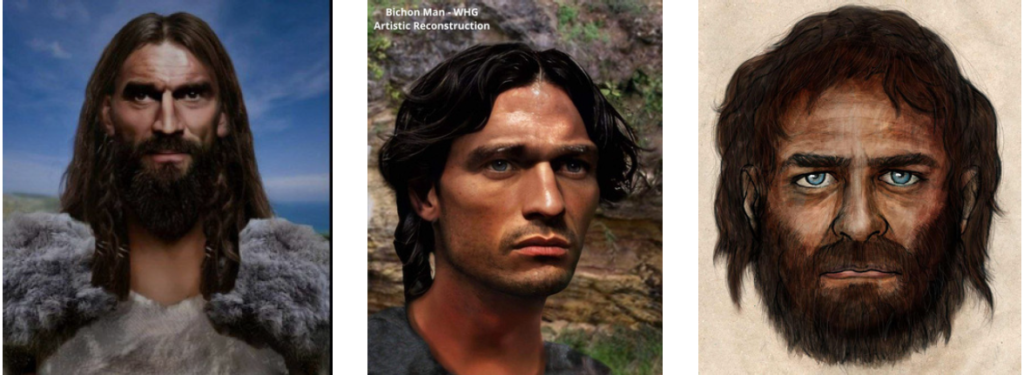
Why on earth would anyone spread such lies? What does it achieve? What is the purpose of spreading them? Are they going to have any positive effect, or is it just to bring down the hated blond man? This new science also makes claims about the Aryan invasion of India: claims that inevitably influenced our circles. It was probably designed for this.
They say that what we know today as Nordic did not really exist until the Bronze Age, and that all Europeans are descended exclusively from people of mixed Arab and Indian appearance. At this point, one would have to be brainless not to see the point of all this: to destroy the racial pride and identity of the Nordic people. The usual suspects are David Reich and his followers. Reich wrote: ‘The fusion of these highly different populations into today’s West Eurasians is vividly evident in what might be considered the classic northern European look: blue eyes, light skin, and blond hair. Analysis of ancient DNA data shows that western European hunter gatherers around eight thousand years ago had blue eyes but dark skin and dark hair, a combination that is rare today. The first farmers of Europe mostly had light skin but dark hair and brown eyes’.
Reich goes on to say that the blond hair came from another northern Eurasian population that was also racially different from the previous two, so yes, the Nordic people are a product of racial mixing. In Who We Are and How we Got Here he continues: ‘The ancient DNA revolution has shown that today’s classifications do not reflect fundamental “pure” units of biology. Instead, today’s divisions are recent phenomena, with their origin in repeating mixtures and migrations. The findings of the ancient DNA revolution suggest that the mixtures will continue. Mixture is fundamental to who we are, and we need to embrace it, not deny that it occurred.’
Reich says this right after explaining that the Nordic race never existed, and the stupid goyim accept it without question. To counter this let’s look at the skull of a Cro-Magnon man, which is a race that occupied the European continent possibly as far back as 56,800 years ago.
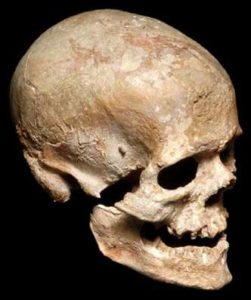 If we look at the skull we see essentially Nordic features: dolichocephalism, not quite vertical forehead, square jaw, sharp and pronounced chin, narrow nose with a high bridge and tall stature.
If we look at the skull we see essentially Nordic features: dolichocephalism, not quite vertical forehead, square jaw, sharp and pronounced chin, narrow nose with a high bridge and tall stature.
Reich only deals with the pigmentation of northern Europeans and does not mention the equally unique combination of facial features, stature and skull shape that also characterises them. We can assume that these would also be explained in the same way if this is how the population in question was formed, i.e., a gradual racial mixing that ended sometime in the early Bronze Age. Now, isn’t it strange that in Europe we have evidence of people with almost the same physical traits for over 50,000 years?
The only thing that makes the Cro-Magnon skull different from today’s Norsemen is a slightly broader face. But there is a simple explanation for this: Cro-Magnons ate a hunter-gatherer diet, which is by far the most complete form of nutrition. This diet, together with a more natural and healthy lifestyle, builds a more consistent skeleton, greater muscle development and a wider face than the later cereal-based diet imported from the Near East during the Neolithic. So we have every reason to believe that Cro Magnon looked like this:

Anti-Nordicists never realise this because they don’t know how to analyse physical traits and don’t believe in physical trait analysis. For them, there is nothing to connect tall stature or certain facial features with light pigmentation. But they are connected, just as the facial features of various African races are connected to their dark pigmentation.
It is also interesting how many anti-Nordicists do not believe that one should be sceptical of David Reich because he is a trustworthy person for them. They assume a kind of conspiracy by the Nordics to oppress non-Nordics and talk about how the racial science of the Third Reich was politicised. They even show stubborn scepticism when confronted with direct first-hand evidence from writers about ancient Greeks or Romans who were blond (see the articles on Greece and Rome in The Fair Race—Ed.).
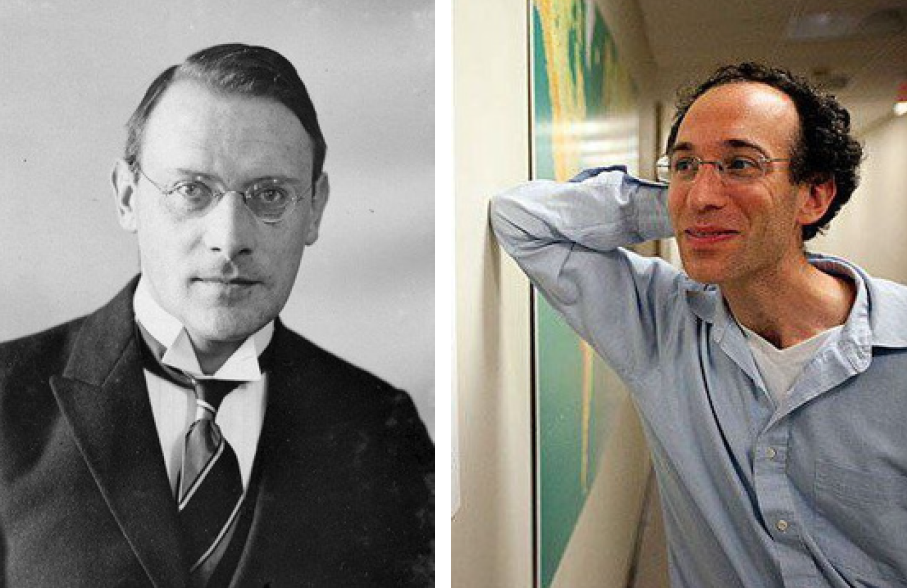
Which one do you find more reliable: the Nazi or the kike?
It is also worth mentioning that many of the people who demand blind faith in David Reich’s research are… holocaust deniers! Some of them even believe that there is a breakaway Nazi German civilisation flourishing on the moon at the moment, so they are not guided by a fair grasp of reality. The first anti-Nordicist I met was a man who denied the abduction of children from the eastern territories for the Lebensborn (see, e.g., pages 117-129 of On Exterminationism, linked in the sticky post—Ed.). They also betray an immense lack of knowledge about the Third Reich and National Socialism, which explains how their ridiculous claims originate.
These neo-Nazis fail to see that, in repudiating Nordicism, they repudiate the racial view of history: the central pillar of historical National Socialism. They are not even capable of substituting the Nordic civilisation for something of similar magnitude. According to their nonsense, the ancient Greeks or the Romans were racially different from the Germanics, which by the way is not only detrimental to NS ideology but also European culture and identitarianism. In contrast, Adolf Hitler, in his speech on 2 April 1927, said: ‘Mankind owes everything great to the struggle and to a race that has triumphed. Take away the Nordic German and all that remains are the dances of the ape’.
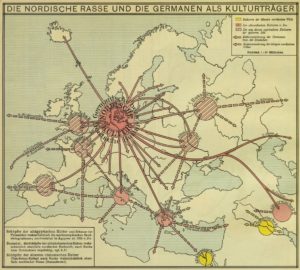
Map taught in a German school
In National Socialism, all history and all historical development are analysed from the racial point of view. Races are not only considered different from each other but categorised in a racial hierarchy. Consequently, the mixing of races is considered extremely detrimental because it diminishes the quality of the superior breed. ‘A herd beast can be bred from all sorts of ingredients, but from such a mixture never emerges a man who will be the bearer of culture or, better still, the founder and creator of culture. The mission of mankind could then be considered as finished’ (Mein Kampf).
If one accepts the neo-Nazi narrative, there is no point in being a National Socialist anymore. It is clear that miscegenation has no negative effect if this is their ideology, so there is nothing to fear. From a self-preservationist perspective, there is nothing to preserve. You are a combination of many different races. You don’t belong to any one race, basically like a pardo from Brazil. Why not add a bit of a Bantu-Negroid component to the cocktail at this point? It might do you good.
Reich is fully aware of the implications of what he is promoting, but many of the goyim don’t want to see them. I hope it has been sufficiently demonstrated that this way of thinking is incompatible with National Socialism.
Based on my past experiences in debating with people, I know that as soon as it is shown that one side has to be chosen, none of them will choose our side, something that betrays that their worldview had not even been NS in the first place. However, I must ask one thing to these people.
Don’t be the kind of mindless idiot who ignores these contradictions and still call yourself a Nazi. This face only poisons the well of true National Socialism. In the coming conflict, Europeans who care about the future and follow NS principles will have the task of preserving the existence of a very distinct human phenotype, much like the one that motivated our predecessors to fight.
If you have a problem with this, you are not on our side.
